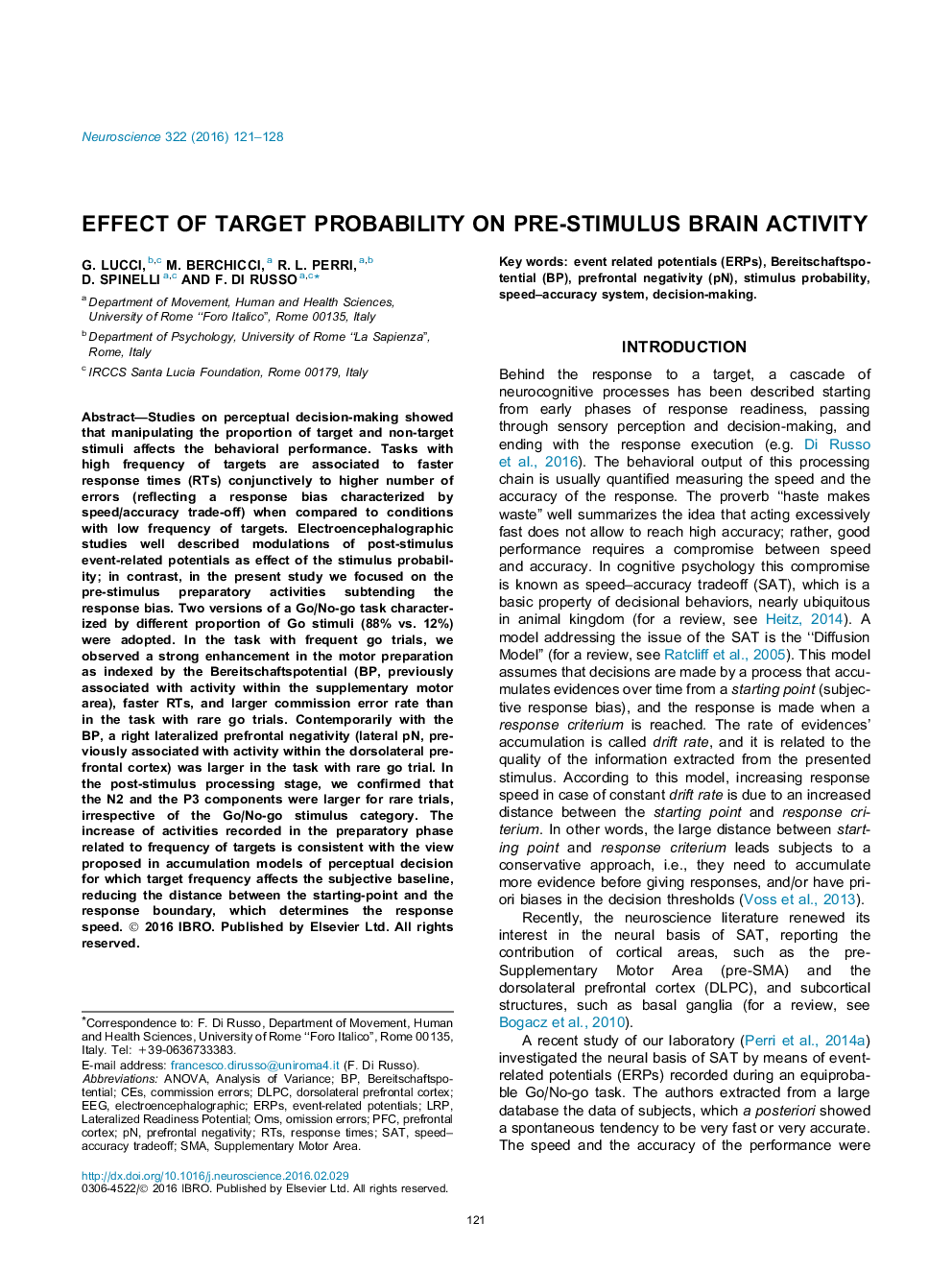| کد مقاله | کد نشریه | سال انتشار | مقاله انگلیسی | نسخه تمام متن |
|---|---|---|---|---|
| 6271180 | 1614754 | 2016 | 8 صفحه PDF | دانلود رایگان |
عنوان انگلیسی مقاله ISI
Effect of target probability on pre-stimulus brain activity
ترجمه فارسی عنوان
تأثیر احتمال هدف بر فعالیت مغز قبل از تحریک
دانلود مقاله + سفارش ترجمه
دانلود مقاله ISI انگلیسی
رایگان برای ایرانیان
کلمات کلیدی
ERPsspeed–accuracy tradeoffBereitschaftspotential (BP)DLPCBereitschaftspotentialSATRTSLRPPFCOMS - WHOStimulus probability - احتمال تحریکCommission errors - اشتباهات کمیسیونelectroencephalographic - الکتروانسفالوگرافیCES - اینanalysis of variance - تحلیل واریانسANOVA - تحلیل واریانس Analysis of varianceDecision-making - تصمیم گیریomission errors - خطاهای حذفSMA - دبیرستانResponse times - زمان پاسخprefrontal cortex - قشر prefrontaldorsolateral prefrontal cortex - قشر پیشانی غدد درون رحمیSMA, supplementary motor area - ناحیه حرکتى تکمیلىEEG - نوار مغزیLateralized readiness potential - پتانسیل آمادگی خالصEvent Related Potentials (ERPs) - پتانسیل مربوط به رویداد (ERPs)Event-related potentials - پتانسیل مربوط به رویداد یا ERP
موضوعات مرتبط
علوم زیستی و بیوفناوری
علم عصب شناسی
علوم اعصاب (عمومی)
چکیده انگلیسی
Studies on perceptual decision-making showed that manipulating the proportion of target and non-target stimuli affects the behavioral performance. Tasks with high frequency of targets are associated to faster response times (RTs) conjunctively to higher number of errors (reflecting a response bias characterized by speed/accuracy trade-off) when compared to conditions with low frequency of targets. Electroencephalographic studies well described modulations of post-stimulus event-related potentials as effect of the stimulus probability; in contrast, in the present study we focused on the pre-stimulus preparatory activities subtending the response bias. Two versions of a Go/No-go task characterized by different proportion of Go stimuli (88% vs. 12%) were adopted. In the task with frequent go trials, we observed a strong enhancement in the motor preparation as indexed by the Bereitschaftspotential (BP, previously associated with activity within the supplementary motor area), faster RTs, and larger commission error rate than in the task with rare go trials. Contemporarily with the BP, a right lateralized prefrontal negativity (lateral pN, previously associated with activity within the dorsolateral prefrontal cortex) was larger in the task with rare go trial. In the post-stimulus processing stage, we confirmed that the N2 and the P3 components were larger for rare trials, irrespective of the Go/No-go stimulus category. The increase of activities recorded in the preparatory phase related to frequency of targets is consistent with the view proposed in accumulation models of perceptual decision for which target frequency affects the subjective baseline, reducing the distance between the starting-point and the response boundary, which determines the response speed.
ناشر
Database: Elsevier - ScienceDirect (ساینس دایرکت)
Journal: Neuroscience - Volume 322, 13 May 2016, Pages 121-128
Journal: Neuroscience - Volume 322, 13 May 2016, Pages 121-128
نویسندگان
G. Lucci, M. Berchicci, R.L. Perri, D. Spinelli, F. Di Russo,
